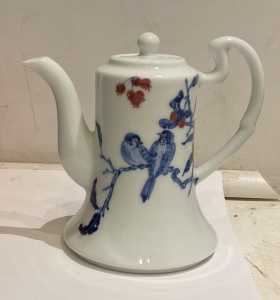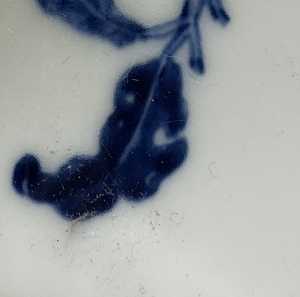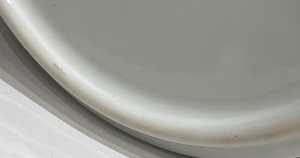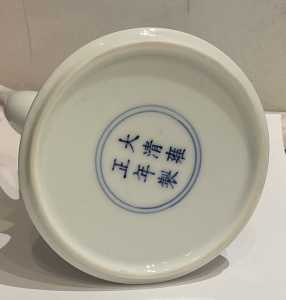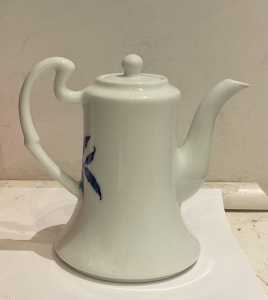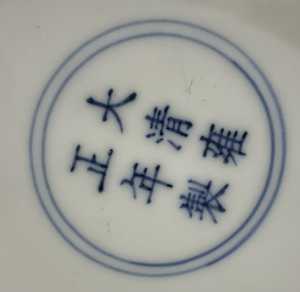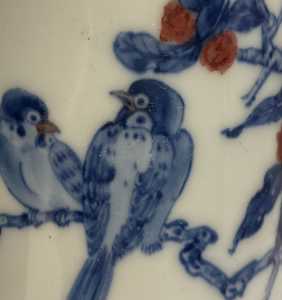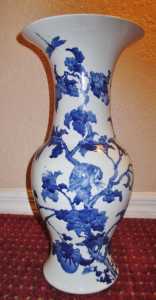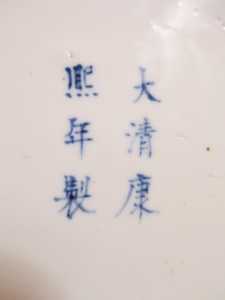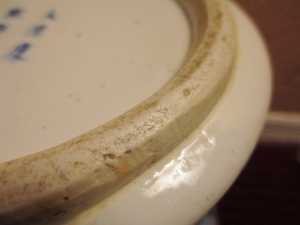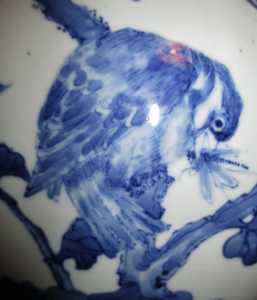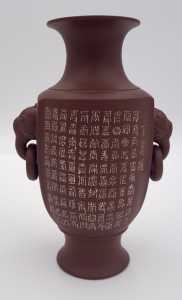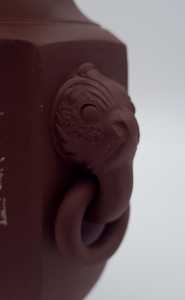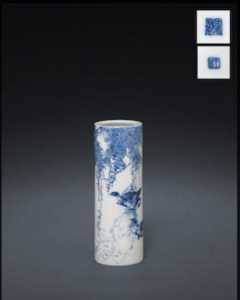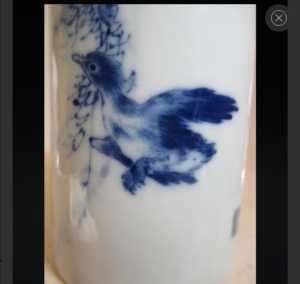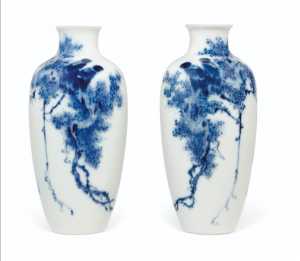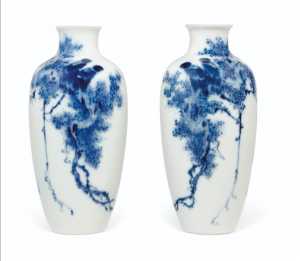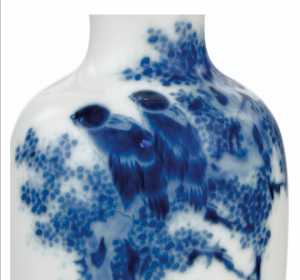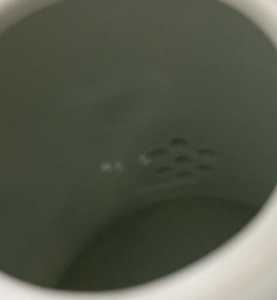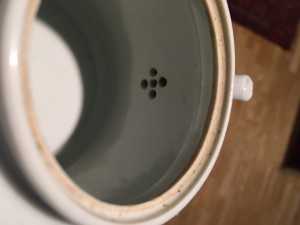The Chinese and Asian Art Forum. For Fans, Collectors and Dealers.
 Basic Rules For the BidAmount Asian Art Forum: Talk about whatever you want. You can even discuss and offer things that are for sale if they are authentic. Maximum image file size per post is 2 MB. Images of 700pxl x 700pxl are optimal if saved at a medium resolution. Be respectful of others and enjoy yourself. Click the YouTube link for a brief tutorial on using the forum. You can also EMBED Videos by cutting and pasting from You-Tube, Vimeo etc.
Basic Rules For the BidAmount Asian Art Forum: Talk about whatever you want. You can even discuss and offer things that are for sale if they are authentic. Maximum image file size per post is 2 MB. Images of 700pxl x 700pxl are optimal if saved at a medium resolution. Be respectful of others and enjoy yourself. Click the YouTube link for a brief tutorial on using the forum. You can also EMBED Videos by cutting and pasting from You-Tube, Vimeo etc.
NOTE: To post an item or add a new post, click open the category title from the FORUM LIST, and CLICK the Blue ADD TOPIC button.
So, from my recent posts, it would be easy to conclude that level of my snobbery towards modern Chinese porcelains copying earlier pieces registers at 11 on a scale of 1 to 10. Actually, that’s not entirely true, which is why I’ve decided to submit this post.
It’s a complicated matter to decide if a modern piece emulating an older one qualifies as art, but art or not, that does not mean that a modern piece can not be appreciated for both its aesthetic beauty, as well as the skillful and technical execution of the creator who made the piece.
I simply feel that we need to draw very clear distinctions between the two in order to avoid potential exploitation of misinformed buyers.
With that, allow me to submit this simple, yet elegant porcelain teapot I own for your intellectual pleasure…
This teapot is a modern piece… quite likely post 2000. I did buy it in hopes of it being earlier, but the form doesn’t seem to line up with known teapots of the Yongzheng, nor the Republic.
However, the $8 I spent when I bought it about 2 years ago was certainly not wasted.
What puts this teapot a tier or two above many modern reproductions is as follows:
The quality of the porcelain is exceptional. It’s not quite milky white as a Yongzheng piece should be, but overall the paste is very high kaolin without impurities. The foot ring is silky smooth, and blind folded, I suspect the most hardened expert would think the piece to be of the period.
The decoration of birds on a fruiting branch, rendered in underglaze blue & red is both technically and artistically beautiful. The blues are rich and piled, the reds are controlled and show qualities of genuine peach bloom, and the overall scene is both playful and sufficiently detailed to hold the viewers attention.
Close up, you can see the piece was well fired, quite possibly wood kiln fired based upon the bubbles.
Finally, the attribution to the Yongzheng by the mark is well deserved. The balance of decor and open space sings of the beauty of Yongzheng design. The mark is perfectly centered and correctly oriented.
Will this teapot one day be considered a masterpiece of the 21st century? Maybe, but I recommend that no one should endeavor in making a decision to buy pieces like this on the hopes of future financial gain.
Isn’t it enough to be worthy of keeping because it’s beautiful? I say YES!
Side story… I gave the teapot to my daughter shortly after I bought it as she was looking to make some money for Christmas. She listed properly described for $150 Buy Now, and accepted an offer $100 from a buyer in Boston, MA.
The buyer requested to return the item because it “wasn’t Yongzheng period”. 🙄
I gladly accepted the piece back, and realized that the world wasn’t ready to accept modern interpretations as art quite yet.
In hindsight, I’m quite happy that the teapot remains mine.
For those attracted to modern Chinese porcelains, I say BRAVO! I encourage you to embrace modern porcelains, but at a reasonable price consistent with the aesthetic quality of the piece, and not in the hopes for future increase in value.
Tim
It might be the photo quality and lighting but the glaze just isn’t adding up to post 2000 for me. I think is older a few things stand out.
Nice teapot. It's almost in the styling of Wang Bu.
For $8......wow you can't complain. The quality overall looks to be very good.
I am not a lover or collector of teapots. But yours is very nice.
In most cases a giveaway with the perfect seal marks.
Mark
@imperialfinegems I know what you mean about a Wang Bu feel to it! I love his work!
Around 2015, I flew out to attend an estate sale in Houston of a socialite that had passed away. She was very active with the Houston Museum of Art's Asian department.
From her estate, I purchased a large B & W vase depicting birds, one of which is seen eating a dragonfly... very unusual. It had a 6 character Kangxi mark and of the late 19th c. I bought it for $600, a sizeable investment at the time for me, but I was sure it was an early work by Wang Bu (before he would sign with his seal), or perhaps by Bu's father who was also a porcelain artist.
Another Chinese buyer was ahead of me at the sale and got to it first, but didn't buy it because it had a 3" hairline, so I got it.
About a year later, I sold it at the Miami Beach Antique show for a sizeable profit, but I've never been able to determine if my belief that it was a work by Wang Bu was correct or not.
I dug deep into my photo archives...here it is... what do you think?
A nice vase. But fortunately for you it's not by Wang Bu. Same or similar styling.
If you carefully compare said with genuine works it will become very clear. His style is very distinctive and I might add exceptionally depicted.
Unfortunately I don't own any.
Mark
A exceptional brush pot by Wang Bu that sold at Bonhams in 2015 for a staggering $317,000.
A beautiful pair of vases sold at christies for $43,000 in 2019. Although attributed to the master. Not 100% sure but I think the vases Peter saw them from memory and passed it on to christies on behalf of the owner.
Mark
@imperialfinegems This article discusses Wang Bu’s apprenticeship and experimentation, and the use of Qianlong and Kangxi marks instead of his seal. Of course, this is all based upon attributions because there is not adequate documentation.
https://watersilkdragon.wordpress.com/2015/09/15/wang-bus-chrysanthemum-legacy-王步菊花遗产/
The examples you cite are masterpieces that represent his mastery of blue & white.
@greeno107 thanks for photo. 7 holes is a good indicator for 2nd half of 20th century. I was hoping to see 3 or 4
@greeno107 thanks for photo. 7 holes is a good indicator for 2nd half of 20th century. I was hoping to see 3 or 4
I wasn't aware of the holes as a indicator of product age.
Thank you Brian.
Mark
Early tea or wine pots tend to have only one hole. Or they may have a few in an irregular pattern and you can either see or feel that they have been made by hand. This one has a pretty standard pattern of holes, all regular sizes in a typical pattern. It is a useful way of assessing the pots if you are unsure from the external aspects.
Thanks for visiting "The BidAmount Asian Art Forum | Chinese Art"
If you sell on eBay, or have a shop feel free to post images and descriptions and links.
Check back often for discussion about the latest news in the Chinese art and antique world. Also find out about the latest Asian art auctions at Sotheby's, Christie's, Bonhams and Tajans.
Auction results for: fine porcelain, ceramics, bronze, jade, textiles and scholar's objects. As well as Japanese, Thai, Vietnamese and other Asian cultures.
Thank you,
Peter Combs
Topics and categories on The BidAmount Asian Art Forum | Chinese Art
Kangxi vases, Kangxi dishes and chargers, Kangxi ritual pieces, Kangxi scholar's objects, Qianlong famille rose, Qianlong enamels, Qianlong period paintings, Qianlong Emporer's court, Fine porcelain of the Yongzheng period. Chinese imperial art, Ming porcelain including Jiajing, Wanli, Xuande, Chenghua as well as Ming jades and bronzes.
The BidAmount Asian Art Forum | Chinese Art
A free Asian art discussion board and Asian art message board for dealers and collectors of art and antiques from China, Japan, Korea, Thailand, Cambodia, Vietnam and the rest of Asia. Linked to all of the BidAmount Asian art reference areas, with videos from plcombs Asian Art and Bidamount on YouTube. Sign up also for the weekly BidAmount newsletter and catalogs of active eBay listing of Chinese porcelain, bronze, jades, robes, and paintings.
The art of calligraphy - and for the ancient Chinese it certainly was an art - aimed to demonstrate superior control and skill using brush and ink. Calligraphy established itself as one of the major Chinese art forms during the Han dynasty (206 BCE - 220 CE), and for two millennia after, all educated men were expected to be proficient at it.
The Museum’s collections of Asian art span nearly five millennia and encompass the cultures of China, the Himalayas, India, Japan, Korea, and Southeast Asia. In 2007, the Museum launched an initiative to create dedicated galleries for the collection, beginning with a gallery for the arts of Korea ...
Chinese art is full of symbolism, in that artists typically seek to depict some aspect of a totality of which they are intuitively aware.
China Online Museum is the finest online museum of Chinese art. It features Chinese calligraphy, painting, ceramics, bronzes, carving, and other artworks.
Chinese Ceramics & Works of Art. Overview Upcoming auctions Contacts Auction results ... Christie’s sales of Chinese ceramics and works of art showcase centuries of Chinese history. Held throughout the year in London, New York, Paris and Hong Kong, they attract a wide audience of collectors and connoisseurs vying for pieces as diverse as ...
Explore Asian Art Week. Contact the Specialist Department. Chinese Paintings ... Senior Specialist, Head of Sale. [email protected]. Tel:+1 212 641 5760. Bid in-person or online for the upcoming auction:Fine Chinese Paintings on 10 September 2019 at New York. Bid in-person or online for the upcoming auction:Fine Chinese Paintings on 10 ...
Discover an abundance of must-see art from all corners of a vast continent at Christie’s NY Asian Art Week. From contemporary classical and Chinese paintings to works with exemplary provenance from the Art Institute of Chicago, our Rockefeller Paza galleries will be full of ancient treasures and contemporary masterworks in a salute to the vibrant arts of Asia.
Sold to benefit The Art Institute of Chicago’s Asian Art Acquisition Fund, the sale features 84 lots with a focus on Ming and Qing porcelains, and offers a rare insight into the taste for collecting Chinese ceramics and works of art in the Midwest from the end of the 19th century through the 1980s. Highlights include two Wanli wucai garlic-head vases, a Qianlong mark and period, blue and ...
Specialist, Chinese Paintings, Christie's London Dr Malcolm McNeill is a Specialist in Chinese Paintings at Christie’s, based in London. He previously worked as an assistant curator of the Chinese collections and the Victoria and Albert Museum in London, as a researcher at the British Museum, and as a translator and tour guide at the National Palace Museum in Taipei.
The Christie's Education 2020 Conference: The Chinese Art Market 18 Jun 2019 Christie’s Education is delighted to announce our first international academic conference in Asia which will take place in Hong Kong from 26-27 November 2020 at the Hong Kong Convention and Exhibition Centre and will run in parallel with Christie’s Hong Kong Autumn Auctions.
The summer Chinese Art sale in Hong Kong will feature works of art from several private collections, including Qing porcelains and textile from the collection of the legendary Chinese art dealer A. W. Bahr (1877–1959), fine gilt bronze Buddhist sculptures from an old Hong Kong collection, an East Asian collection of Qing dynasty wine cups and jades, and a Japanese collection of Song ceramics ...
Sotheby's Chinese Works of Art Department holds two auctions each year in London, New York, Hong Kong and Paris.
Chinese Art - View Auction details, bid, buy and collect the various artworks at Sothebys Art Auction House.
With more than 340 Chinese works of art dating from the Neolithic to the Republic periods, highlights of this sale include a selection of Qing Imperial monochromes from the collection of Arnold and Blema Steinberg, early ceramics from the Art Institute of Chicago and Chinese porcelain and works of art from the collection of Henry Arnhold.
Results: Sotheby's Asia Week achieved $52.4 million in six strong auctions, exceeding pre-sale estimates. With 76.5% of lots sold and 60.3% of lots surpassing high estimates, the Asian art sales at Sotheby's indicate continued collector interest in the finest works of art from China, India and and the Himalayas.
Today's sale of Important Chinese Art will proceed as planned with sessions at 10 AM and 2 PM EDT. Sotheby's will be monitoring the weather conditions throughout the day and will be available to coordinate alternative bidding options should conditions make it difficult for clients to attend the auction in person.
Bonhams Chinese Art department is renowned for offering the finest works of art representing the richness and breadth of China's artistic heritage, particularly Imperial porcelain, white and spinach green jades, cloisonné and Buddhist art. Specialised international auctions are held globally, including London, Hong Kong and San Francisco.
Bonhams : Chinese Works of Art We use cookies to remember choices you make on functionality and personal features to enhance your experience to our site. By continuing to use our site you consent to the use of cookies. Please refer to our privacy and cookie policies for more information.
Bonhams Fine Art Auctioneers & Valuers: auctioneers of art, pictures, collectables and motor cars. We use cookies to remember choices you make on functionality and personal features to enhance your experience to our site. By continuing to use our site you consent to the use of cookies. ... Chinese Art (US) General enquiries
Bonhams : Fine Chinese Art We use cookies to remember choices you make on functionality and personal features to enhance your experience to our site. By continuing to use our site you consent to the use of cookies. Please refer to our privacy and cookie policies for more information.
Bonhams Fine Art Auctioneers & Valuers: auctioneers of art, pictures, collectables and motor cars Bonhams : Asian Art We use cookies to remember choices you make on functionality and personal features to enhance your experience to our site.
Bonhams are international auctioneers of fine Chinese and Japanese art. We specialise in rare Imperial and Export Chinese ceramics and works of art, as well as Japanese ceramics, fine and decorative works of art from the Neolithic Period to the 20th century. View on map
Bonhams Fine Art Auctioneers & Valuers: auctioneers of art, pictures, collectables and motor cars. We use cookies to remember choices you make on functionality and personal features to enhance your experience to our site. By continuing to use our site you consent to the use of cookies. ... Asian Art Bonhams. Work. 22 Queen St.
